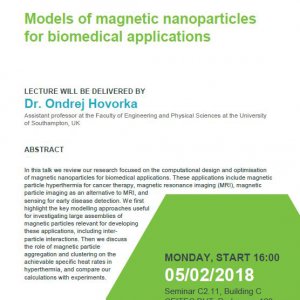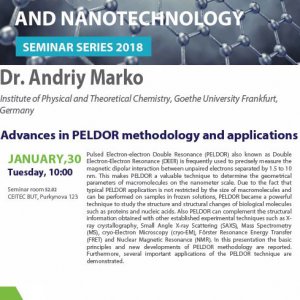
| Phone: |
+420 54949 6607 |
| E-mail: |
|
| Office: |
|
Research areas
-
Structural biology of protein-DNA complexes
-
Small molecule inhibitors
-
NMR structure determination of large proteins
Main objectives
-
Biochemical and structural characterization of protein-DNA interactions involved in DNA repair and transcription
-
Design and pre-clinical evaluation of compounds for lead optimization
-
Development of integrated structural approaches for studying large biomolecules in solution
Content of research
We use NMR and hybrid structural methods, as well as biophysical techniques, to study protein-DNA complexes involved in DNA repair and transcription. Both topics involve proteins that are promising targets for anti-cancer drugs. Therefore the group has a strong interest in structure-based drug design.
Protein-DNA transactions are essential for genome maintenance. We use structural, biochemical, and computational tools to study the function of DNA-repair factors. We employ a combination of solution techniques (NMR, SAXS-SANS, FRET) to structurally characterize protein-DNA complexes and understand dynamic rearrangements induced upon DNA binding. Structural findings are complemented in a broader functional context by genetic, molecular or cell biology, and single-molecule assays (L. Krejci, Masaryk University).
DNA repair as a therapeutic target has received considerable attention owing to the promise of drugs that target DNA-repair enzymes and potentiate conventional cytotoxic therapy through mechanism-based approaches. In this direction, we study the binding of small molecules to protein targets of interest, in order to modulate their function for potential therapeutic benefit. Promising inhibitors are identified based on in silico design (Prof. E. Mikros, University of Athens; Prof. J. Tuszynski, University of Alberta) or high-throughput screening (P. Bartunek, IMG Prague).

1. Development and evaluation of next-generation drug design algorithms
Supervisor: Konstantinos Tripsianes, Ph.D.
Consultants: doc. RNDr. Tomáš Brázdil, Ph.D., Thomas Evangelidis, M.Phil., Ph.D.
Annotation:
Hit compounds from virtual screening are chemically modified to increase their binding affinity against a protein receptor. To be able to select potent analogs among hundreds of candidates, a new algorithm named ScaffOpt has been developed. Scaffopt employs multiple machine learning techniques to create, on the fly, a receptor specific Metapredictor, which ctripsianombines the predictions of an ensemble of artificial neural networks to predict the relative binding affinity of each synthetic compound with great accuracy. The aim of the project is to extend ScaffOpt algorithm to do virtual screening on large chemical databases either by ligand similarity or docking, or combination thereof. The performance of the new algorithms will be evaluated retrospectively on available datasets or by application to real drug design endeavors conducted in concert with collaborating laboratories. The successful candidate should have strong interest to modern structure- and ligand-based drug design, and the appropriate computational background to gain expertise in machine learning algorithms, Python programming, chemoinformatics tools, and molecular dynamics simulations.
Keywords: ScaffOpt, Metapredictor, binding affinity, virtual screening, ligand-based drug design, docking, Python programming, next-generation drug design, next-generation drug











